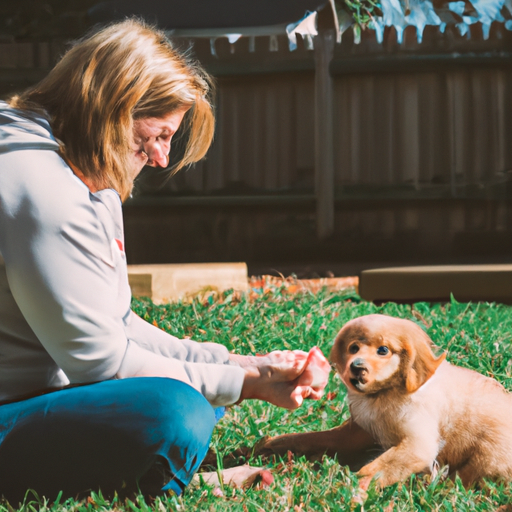Understanding Your Puppy’s Behavior
The first step to getting your puppy to listen to you is understanding why they behave the way they do. Puppies are naturally curious and energetic, which can often be misconstrued as disobedience. However, it’s crucial to remember that puppies are still learning about their environment and need guidance to understand what is expected of them.
Here are a few key points to keep in mind:
- Your puppy’s world is all new: Everything is an opportunity for exploration and learning.
- Puppies have short attention spans: They can easily get distracted by a new smell, sound, or object.
- Teething can make your puppy act out: This is a painful process, and your puppy may chew on things to alleviate the discomfort.
- Puppies need lots of sleep: Just like human babies, puppies need plenty of rest. An overtired puppy is more likely to act out.
Establishing a Bond
Building a strong bond with your puppy is the cornerstone of effective communication. Your puppy needs to trust and respect you in order to listen to you. This process should be gentle and positive, with a focus on reinforcing good behavior rather than punishing the bad.
- Spend quality time: Play with your puppy, groom them, and let them sleep near you.
- Be consistent: Use the same words and gestures for commands so your puppy can learn them.
- Reward good behavior: Praise your puppy and give them treats when they behave well.
Communicating Effectively
Once you’ve established a bond with your puppy, it’s time to work on your communication skills. This is where your patience and understanding will really come into play.
| Tips | Explanation |
|---|---|
| Keep commands simple | Stick to one or two word commands like “sit”, “stay”, “come”. |
| Use a clear, firm voice | Speak in a tone that’s easy for your puppy to understand. |
| Use body language | Dogs are very visual creatures. Use hand gestures along with verbal commands. |
Training Techniques
Training your puppy can be a fun and rewarding experience if you use the right techniques. Here are a few methods you can try:
- Positive Reinforcement: Reward your puppy for good behavior with treats, praise, or playtime.
- Clicker Training: Use a clicker to mark the exact moment your puppy does what you want, then reward them.
- Lure Training: Use a toy or treat to guide your puppy into the desired position or behavior.
Dealing with Common Challenges
Even with the best training techniques, you’re likely to encounter some challenges along the way. Here’s how to deal with a few common issues:
- Biting: Redirect your puppy’s biting to appropriate toys and praise them when they make the switch.
- Jumping up: Ignore your puppy when they jump up and reward them when they have four feet on the ground.
- Not coming when called: Practice the “come” command in a secure, distraction-free environment before trying it in more challenging situations.
Frequently Asked Questions
Q: How long should training sessions be?
A: Keep training sessions short and sweet. Aim for 5-10 minutes at a time, several times a day.
Q: What if my puppy doesn’t respond to my commands?
A: Remember, patience is key. If your puppy isn’t responding, they might be distracted, confused, or just not in the mood. Take a break and try again later.
Q: My puppy is still biting and chewing everything. What should I do?
A: Provide plenty of appropriate chew toys for your puppy, and reward them for using them. If the problem persists, consider consulting with a professional dog trainer.
By following these steps and maintaining a patient, positive approach, you’ll build a strong bond with your puppy and teach them to listen to and respect you. Remember, every puppy is unique and will learn at their own pace. Enjoy the journey and celebrate every success along the way.



